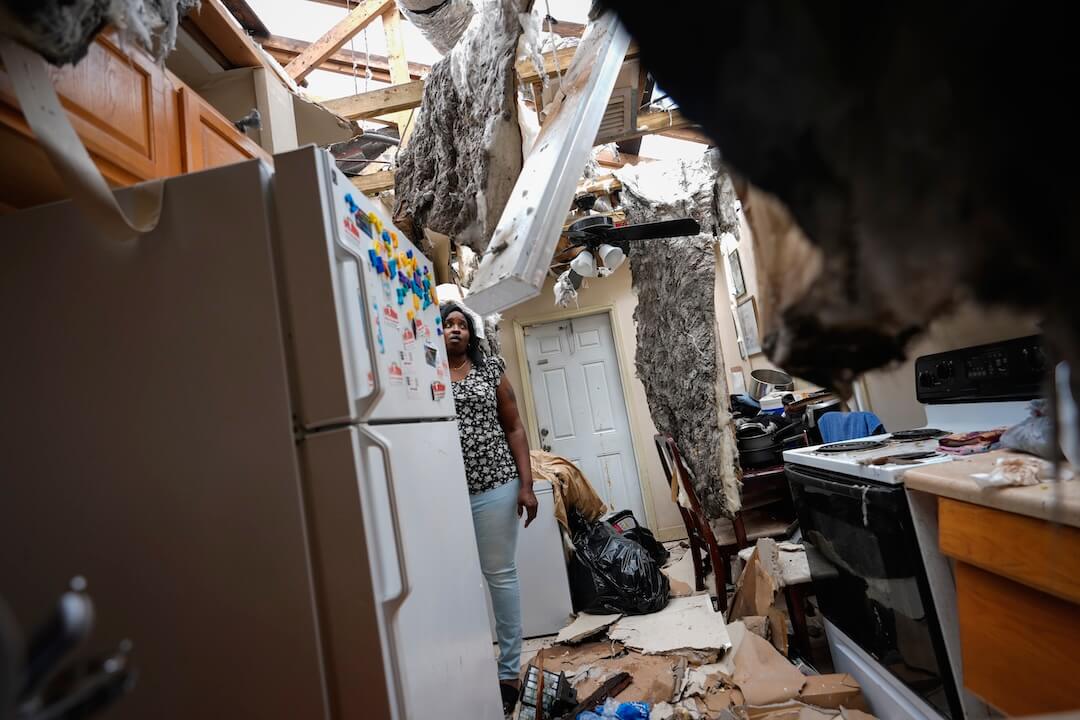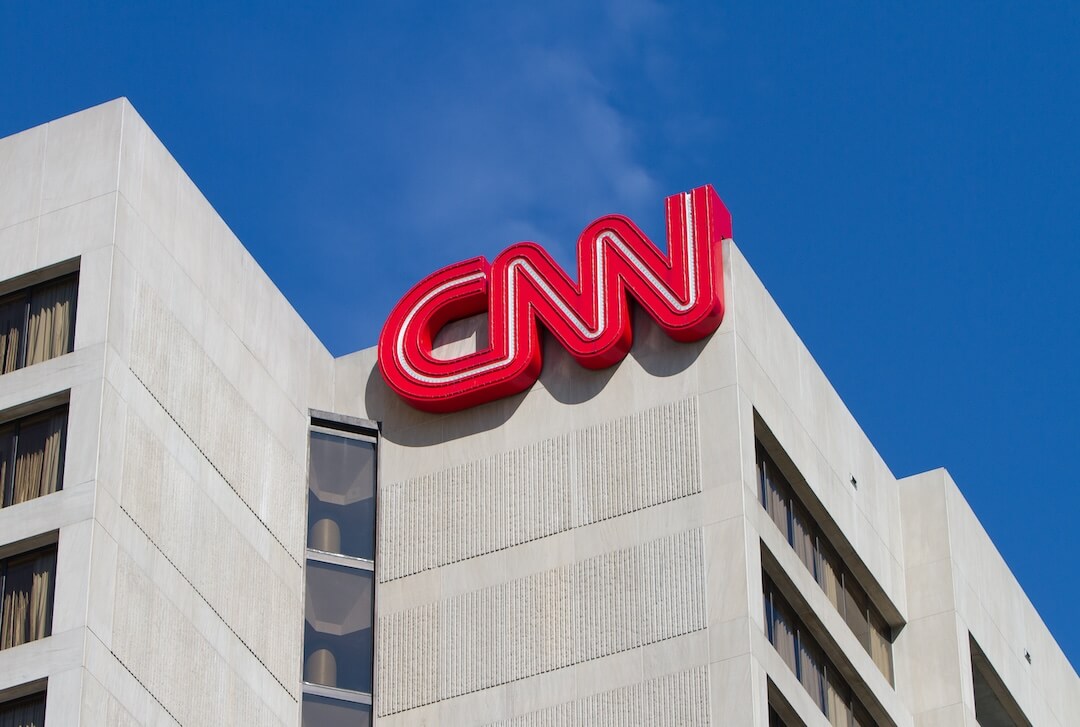 Covering COVID-19 is a daily Poynter briefing of story ideas about the coronavirus and other timely topics for journalists, written by senior faculty Al Tompkins. Sign up here to have it delivered to your inbox every weekday morning.
Covering COVID-19 is a daily Poynter briefing of story ideas about the coronavirus and other timely topics for journalists, written by senior faculty Al Tompkins. Sign up here to have it delivered to your inbox every weekday morning.
Today begins a new era with America’s two biggest trade partners, Mexico and Canada. The new United States-Mexico-Canada Agreement replaces the North American Free Trade Agreement, or NAFTA.
Negotiating a new trade deal with our neighbors was a key issue in Donald Trump’s 2016 election. And here is something fairly rare these days: Both Democrats and Republicans have nice things to say about the agreement.
There may be no more important time for a new trade agreement to kick in. To recover from the pandemic, the U.S. economy needs ports, trucking routes, trains and supply lines to be humming.
Let me point you to some local data and insights so you can see this is a way bigger story than you might think. We get so caught up in the micro-economies affected by local bars and restaurants being closed that we take our eyes off the billions of dollars in international trade that mean jobs for millions of Americans. This also affects the costs of what we eat, wear, drive and use every day.
This shows you what the USMCA means to each state. You will get data that looks like this for Florida, just as an example:

(Office of the United States Trade Representative)
The deal includes new protections for intellectual property, copyright, collective bargaining and environmental issues, but the minimum wage rules stand to be the most disruptive. Journalists, don’t underestimate the importance of this deal.
Of significance is a part of the USMCA that requires 75% of the parts of a vehicle to be sourced from the U.S., Canada or Mexico or the vehicle will be subject to a tariff. NAFTA set the bar at 62.5%. It may sound like a small percentage increase, but it is significant. Critics have said it will lead to major shifts in supply chains in a short period of time in an effort to avoid tariffs.
The USMCA contains new mandates to drive higher wages by requiring that 40-45% of auto parts be made by workers earning at least $16 USD per hour (the percentage ramps up from the first year until 2023). The Federal Reserve Bank of St. Louis said it comes with some peril for American auto workers:
This could benefit U.S. workers since they earn higher wages than workers in Mexico, but it would also increase the cost of cars made in North America. In the long run, this could lead to decreased global demand for cars manufactured in North America as they become less competitive in a global market, which could ultimately hurt U.S. autoworkers.
The USMCA is important to farmers. The Office of the U.S. Trade Representative said:
Canada and Mexico are our first and third largest exports markets for United States food and agricultural products, making up 28 percent of total food and agricultural exports in 2017. These exports support more than 325,000 American jobs.
The new trade agreement will help U.S. dairy, poultry and egg farmers who sell products to Canada the most.

(Office of the United States Trade Representative)
In the U.S., websites and social media companies are protected by Section 230 of the Communications and Decency Act of 1996. It says that online sites cannot be held liable for what users write. The USMCA expands that same protection to websites in Mexico and Canada. But the USMCA does allow victims of sex trafficking to go after websites and online services that facilitate the crimes.
Here’s some more data to see how it affects your readers/viewers/listeners. The U.S. Census Bureau breaks trade data down by country, state, metro area and even zip code.
Metro areas can see who their trading partners and are what they import and export to and from. You even search by zip code if you want to get micro-local. On the state level, Texas, California, Ohio, Michigan, Florida and New York are all big North American exporters.
Let’s say you wanted to find out how much stuff Alabama exports to Canada. This page will get you that information and it will look like this:

(International Trade Administration)
Of course, you can look up every state’s exports and imports to and from every country on the map.
The EU adopted a list of countries that are welcome to visit. The U.S. is NOT on the list.
Americans who want to travel to countries like Germany, France, Italy, Spain or Sweden are out of luck because of COVID-19. The European Union decided Tuesday that, starting today, Canadians are welcome, but the coronavirus is just too widespread in the U.S. to allow us in.
To recap, visitors from Uruguay, Rwanda and China are all welcome, but the U.S. is on the banned list along with Russia and Brazil.
The ban will stay in place until the U.S. gets its act together and reduces the virus infection rate to the levels of EU countries.
[the_ad id=”667826″]
The U.S. rejected an international COVID-19 vaccine group
It is also worth noting that the United States refused to join an international group working together on a COVID-19 vaccine. The group — called Gavi, the Vaccine Alliance — includes 31 governments that are already distributing other vaccines.
The concern around the globe is that the U.S. might develop a vaccine and distribute it to Americans first rather than to health care workers around the globe. I bring this up to get us asking questions about how we will make decisions about how to distribute a vaccine once it becomes available. It will be politically unpopular, I would think, to say anything other than “America First,” but health officials will have a very different response.
The U.S. does contribute money to Gavi’s other vaccination work, but is not part of the alliance around COVID-19.
Here is something to consider: American companies are not the only ones looking for a vaccine. This is a map of all of the COVID-19 drug trials going on right now.

(Gavi)
As you see, almost all are in phase one and phase two of testing.
Why is contact tracing not working?
I want to circle back to something Dr. Anthony Fauci said last week. He said contact tracing is not working well because many Americans, particularly in Black and brown communities, do not want to pick up phone calls from government representatives.
In Massachusetts, which has one of the most established tracing programs in the country, health officials said in May that only about 60 percent of infected patients were picking up the phone. In Louisiana, less than half were answering.
Local and state governments nationwide have hired thousands of tracers. We need more reporting about what they are doing, how they are doing it and why it is not producing the information that Dr. Fauci said we need.
The Association of State and Territorial Health Officials, which represents public health agencies in the U.S., said that we would need another 250,000 tracers to have a similar per capita level of tracing that China did in Wuhan. The association’s guidelines are 15 tracers per 100,000 people during normal times and 30 per 100,000 during a pandemic.
Based on those standards, Nephron Research, a health care investment research company, said:
Rapidly expanding but not rapidly enough. The total number of tracers has expanded to 44k from roughly 11k at the start of the pandemic. While we do not want to downplay the progress made, the expansion falls far short of the 99k needed to meet the pop. threshold and our calculation of 145k-435k needed for all states to meet the tracer/positive threshold based on current cases.
Only seven states have ramped tracing to pandemic levels. At present, only seven states have sufficient tracers to meet the National Association of County and City Health Officials standard of 30 tracers per 100K during periods of pandemic. An incremental 7 states have near-term plans to increase capacity to recommended pandemic levels (we note only an additional 16 plan to meet the non-pandemic threshold of at least 15/100k).
The majority of ‘hot spot’ states fall short on tracing. Of our top 10 current state ‘Hot Spots’, FL, AZ, NV, GA, TX and KS do not possess the recommended number of tracers and have no near-term plans to increase tracing workforces to required levels. Utah is the only one to meet the tracer/pop threshold while SC, OK and ID are the only others to have even stated plans to meet at least the normal measure.
Many states with declining case trends must increase tracing to mitigate future outbreaks. Early hot spots such as NY, MA and D.C. currently exceed the 30 tracers per pop threshold and NJ, DE, RI, MD and IL have plans to meet this level yet only NY and MA meet the tracer per positive case threshold and CA and WA remain far behind on both metrics.
Months ago, the Centers for Disease Control and Prevention and lawmakers were discussing with state officials the possibility of enlisting and training workers from the U.S. Census Bureau and volunteers from the Peace Corps and AmeriCorps. But nothing much seems to have come from that idea. The idea has a certain amount of logic since the Peace Corps called more than 7,300 volunteers home from 60 countries after the pandemic broke out and left the workers without jobs or unemployment benefits.
Contact tracing is not a new concept. The U.S. government has used it to track tuberculosis, AIDS, sexually transmitted diseases and measles.
The Eau Claire Leader-Telegram in Wisconsin produced a terrific story on what to expect if a contact tracer calls you.
Authorized contact tracers who work for the county or the state will contact you via telephone, identify themselves with a first and last name, say what government entity they are calling from and tell you may have been in contact with someone who has tested positive for COVID-19.
Authorized contact tracers may ask you for information such as:
How you are feeling?
Where you went and who you’ve been in contact with in the last few weeks
Contact information for those you’ve been in contact with recently
Occupation and work status
Contact information and contact preferencesIf the person contacting you is an authorized contact tracer:
They will not ask for money or for personal information, like a Social Security, bank account or credit card number.
They will not disclose the identity of the person who tested positive.
They should be able to immediately give you up-to-date testing locations, with addresses, phone numbers and information about whether you need to make an appointment at a particular location and what you will need to bring to that visit.
[the_ad id=”667872″]
Nursing home visitation bans have renewed interest in in-room cameras
The Associated Press reported that there is new interest in state laws that allow families to install remote cameras in nursing home rooms to monitor the care of loved ones. The AP said the Missouri legislature just passed such a bill that is now sitting on the governor’s desk. Ohio and Connecticut also are considering such legislation.
The Nursing Home Abuse Center has a list of 10 states that allow cameras in residents’ rooms and lists some of the pros, cons and big questions around the idea. For example, what if there is a roommate? Should caregivers know they are on camera?
Report on how hospitals are under financial pressure again
Hospitals never recovered from the first big shutdown that stopped profitable elective surgeries and put rural hospitals on life support. Now a new round of COVID-19 cases is hitting hospitals just when they were starting to get running again.
The Association of Health Care Journalists is urging journalists to explore the health of their local hospitals. MarketWatch reported that hospitals will likely lose $200 billion in revenue by the end of June. Add to that the way the virus has affected the incomes of individual physicians and other health care workers.
In an essay for the Association of Health Care Journalists, Joseph Burns suggested:
Since hospitals are among the largest employers in many cities and towns, their financial problems are a big story nationwide as hospital closings or downsizings, with resulting layoffs or furloughs, ripple through the economy. A good story for you to track in the coming months will be how financially sound facilities consider acquiring or merging with smaller hospitals, further consolidating the industry.
Another trend to track: Facing deep losses, hospitals will attempt to raise rates for consumers, health insurers and employers. It will be important for journalists to note that the cost of hospital care already was a concern among employers and health care researchers, as we reported in April in “Scrutiny of hospital charges likely to intensify in wake of pandemic.”
This tip sheet, “Resources to help you track hospital costs for patients with COVID-19, other ailments,” may be useful in your coverage.
Fast food is doing pretty well during the pandemic
Not only are fast food restaurants cutting costs by not having people eat in dining rooms, they also are finding new ways to speed up drive-thru delivery. McDonald’s cut a bunch of items off the menu and sped up drive-thru times by 25 seconds. Some chains are offering “Feed the Family” deals and likely will continue doing so after the pandemic eases because of their popularity.
One thing that may not come back is fast food restaurant playgrounds. Both McDonald’s and Chick-fil-A recently announced their playgrounds will remain closed even as restaurants begin to reopen.
We’ll be back tomorrow with a new edition of Covering COVID-19. Sign up here to get it delivered right to your inbox.
[the_ad id=”667878″]
Al Tompkins is senior faculty at Poynter. He can be reached at atompkins@poynter.org or on Twitter, @atompkins.







